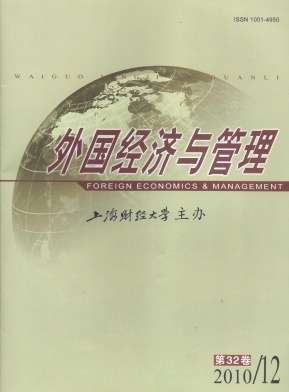团队领导研究述评
外国经济与管理 2010 年 第 32 卷第 12 期, 页码:57 - 63
摘要
参考文献
摘要
团队领导对于打造高绩效团队至关重要。现有的团队领导研究主要集中在团队领导产生方式、团队领导职能、团队领导行为以及团队领导对团队效能的作用等方面。本文从以上几个方面对有关团队领导的最新研究成果进行了述评,并指出了未来的研究方向。
[1]Pearce,C L,and Si ms,HP,Jr.Vertical versus sharedleadership as predictors of the effectiveness of change management teams:An examination of aversive,directive,transactional,transformational,and empoweringleader behaviors[J].Group Dynamics:Theory,Re-search,and Practice,2002,6(2):172-197.
[2]Erez,A,LePine,J A,and El ms,H.Effects of rotated leadership and peer evaluation on the functioning and effectiveness of self-managed teams:Aquasi-experi ment[J].Personnel Psychology,2002,55(4):929-948.
[3]Yukl,G.Leadershipin organizations(4th Ed.)[M].NewJersey:Prentice Hall,1998.
[4]Zaccaro,S J,Heinen,B,and Shuffler,M.Teamleadership and teameffectiveness[A].in E Salas,G F Goodwin,and C S Burke(Eds.).Teameffectivenessin complex organizations:Cross-disciplinary perspectives and approaches[C].New York:Routledge,2009:83-111.
[5]Wageman,R.Howleaders foster self-managing team effectiveness:Design choices versus hands-on coaching[J].OrganizationScience,2001,12(5):559-577.
[6]Druskat,V U,and Wheeler,J V.Managing from the boundary:The effective leadership of self-managing work teams[J].Academy of Management Journal,2003,46(4):435-457.
[7]Day,D V,Gronn,P,and Salas,E.Leadershipinteam-based organizations:Onthe threshold of a newera[J].Leadership Quarter-ly,2006,17(3):211-216.
[8]Carson,J B,Tesluk,P E,and Marrone,J A.Shared leadership in teams:An investigation of antecedent conditions and perform-ance[J].Academy of Management Journal,2007,50(5):1 217-1 234.
[9]Kozlowski,S WJ,Watola,D J,Jensen,J M,Ki m,B H,and Botero,I C.Developing adaptive teams:Atheory of dynamic teamleadership[A].in E Salas,G F Goodwin,and C S Burke(Eds.).Teameffectiveness in complex organizations:Cross-disciplinary perspec-tives and approaches[C].New York:Routledge,2009:113-155.
[10]Hackman,J R,and Wageman,R.Atheory of teamcoaching[J].Academy of Management Review,2005,30(2):269-287.
[11]Morgeson,F,DeRue,D S,and Karam,E P.Leadership in teams:Afunctional approach to understanding leadership structuresand processes[J].Journal of Management,2010,36(1):5-39.
[12]Day,D V,Gronn,P,and Salas,E.Leadership capacity in teams[J].Leadership Quarterly,2004,15(6):857-880.
[13]Foti,RJ,and Hauenstein,N MA.Pattern and variable approachesinleadership emergence and effectiveness[J].Journal of Ap-plied Psychology,2007,92(2):347-355.
[14]Zaccaro,S J,Ritt man,A L,and Marks,M A.Teamleadership[J].Leadership Quarterly,2001,12(4):451-483.
[15]Fleishman,E A,et al.Taxonomic effects in the description of leader behavior:A synthesis and functional interpretation[J].Leadership Quarterly,1991,2(4):245-287.
[16]Marks,M A,Mathieu,J E,and Zaccaro,S J.Atemporally based framework and taxonomy of team processes[J].Academy ofManagement Review,2001,26(3):356-376.
[17]Schippers,MC,Den Hartog,D N,Koopman,P L,and Wienk,J A.Diversity and teamoutcomes:The moderating effects of out-come interdependence and grouplongevity and the mediating effect of reflexivity[J].Journal of Organizational Behavior,2003,24(6):779-802.
[18]Gibson,C,and Vermeulen,F.A healthy divide:Subgroups as a sti mulus for teamlearning behavior[J].Administrative ScienceQuarterly,2003,48(2):202-239.
[19]Burke,C S,Stagl,K C,Klein,C,Goodwin,G F,Salas,E,and Halpin,S M.What type of leadership behaviors are functional inteams?[J].Leadership Quarterly,2006,17(3):288-307.
[20]Li m,B C,and Ployhart,R E.Transformational leadership:Relations tothe five-factor model andteamperformanceintypical andmaxi mumcontexts[J].Journal of Applied Psychology,2004,89(4):610-621.
[2]Erez,A,LePine,J A,and El ms,H.Effects of rotated leadership and peer evaluation on the functioning and effectiveness of self-managed teams:Aquasi-experi ment[J].Personnel Psychology,2002,55(4):929-948.
[3]Yukl,G.Leadershipin organizations(4th Ed.)[M].NewJersey:Prentice Hall,1998.
[4]Zaccaro,S J,Heinen,B,and Shuffler,M.Teamleadership and teameffectiveness[A].in E Salas,G F Goodwin,and C S Burke(Eds.).Teameffectivenessin complex organizations:Cross-disciplinary perspectives and approaches[C].New York:Routledge,2009:83-111.
[5]Wageman,R.Howleaders foster self-managing team effectiveness:Design choices versus hands-on coaching[J].OrganizationScience,2001,12(5):559-577.
[6]Druskat,V U,and Wheeler,J V.Managing from the boundary:The effective leadership of self-managing work teams[J].Academy of Management Journal,2003,46(4):435-457.
[7]Day,D V,Gronn,P,and Salas,E.Leadershipinteam-based organizations:Onthe threshold of a newera[J].Leadership Quarter-ly,2006,17(3):211-216.
[8]Carson,J B,Tesluk,P E,and Marrone,J A.Shared leadership in teams:An investigation of antecedent conditions and perform-ance[J].Academy of Management Journal,2007,50(5):1 217-1 234.
[9]Kozlowski,S WJ,Watola,D J,Jensen,J M,Ki m,B H,and Botero,I C.Developing adaptive teams:Atheory of dynamic teamleadership[A].in E Salas,G F Goodwin,and C S Burke(Eds.).Teameffectiveness in complex organizations:Cross-disciplinary perspec-tives and approaches[C].New York:Routledge,2009:113-155.
[10]Hackman,J R,and Wageman,R.Atheory of teamcoaching[J].Academy of Management Review,2005,30(2):269-287.
[11]Morgeson,F,DeRue,D S,and Karam,E P.Leadership in teams:Afunctional approach to understanding leadership structuresand processes[J].Journal of Management,2010,36(1):5-39.
[12]Day,D V,Gronn,P,and Salas,E.Leadership capacity in teams[J].Leadership Quarterly,2004,15(6):857-880.
[13]Foti,RJ,and Hauenstein,N MA.Pattern and variable approachesinleadership emergence and effectiveness[J].Journal of Ap-plied Psychology,2007,92(2):347-355.
[14]Zaccaro,S J,Ritt man,A L,and Marks,M A.Teamleadership[J].Leadership Quarterly,2001,12(4):451-483.
[15]Fleishman,E A,et al.Taxonomic effects in the description of leader behavior:A synthesis and functional interpretation[J].Leadership Quarterly,1991,2(4):245-287.
[16]Marks,M A,Mathieu,J E,and Zaccaro,S J.Atemporally based framework and taxonomy of team processes[J].Academy ofManagement Review,2001,26(3):356-376.
[17]Schippers,MC,Den Hartog,D N,Koopman,P L,and Wienk,J A.Diversity and teamoutcomes:The moderating effects of out-come interdependence and grouplongevity and the mediating effect of reflexivity[J].Journal of Organizational Behavior,2003,24(6):779-802.
[18]Gibson,C,and Vermeulen,F.A healthy divide:Subgroups as a sti mulus for teamlearning behavior[J].Administrative ScienceQuarterly,2003,48(2):202-239.
[19]Burke,C S,Stagl,K C,Klein,C,Goodwin,G F,Salas,E,and Halpin,S M.What type of leadership behaviors are functional inteams?[J].Leadership Quarterly,2006,17(3):288-307.
[20]Li m,B C,and Ployhart,R E.Transformational leadership:Relations tothe five-factor model andteamperformanceintypical andmaxi mumcontexts[J].Journal of Applied Psychology,2004,89(4):610-621.
引用本文
曾楚宏, 王斌, 朱仁宏. 团队领导研究述评[J]. 外国经济与管理, 2010, 32(12): 57–63.
导出参考文献,格式为:





 6126
6126  367
367

